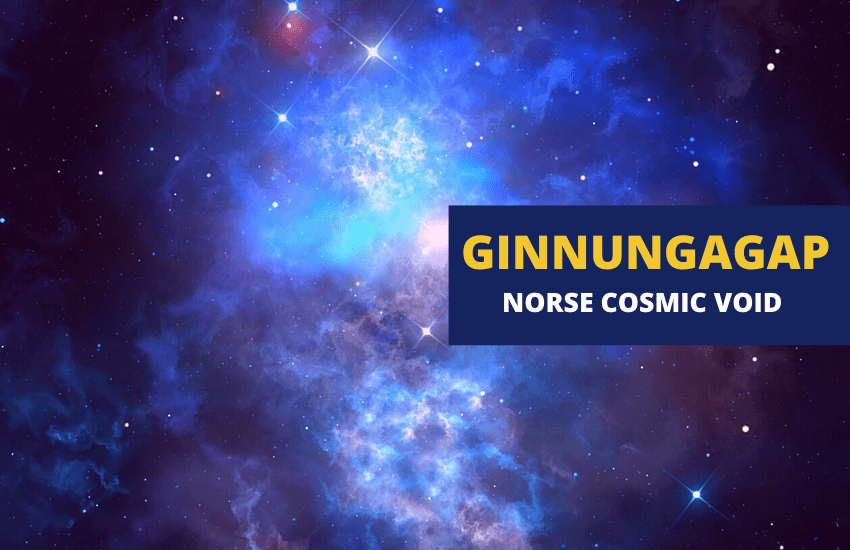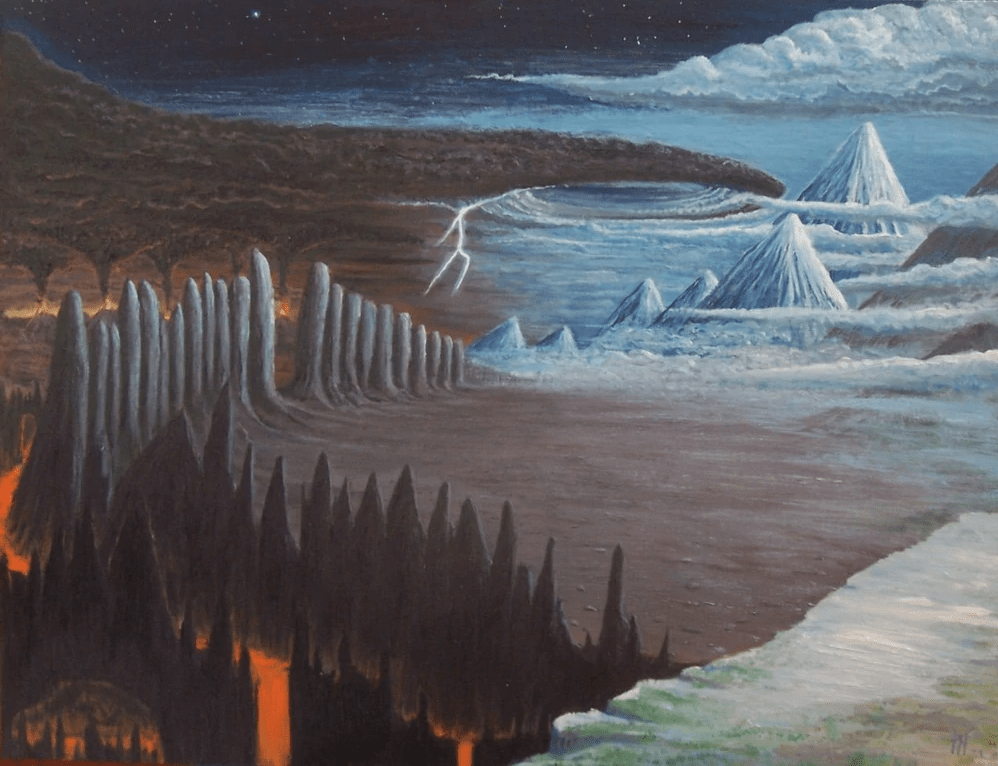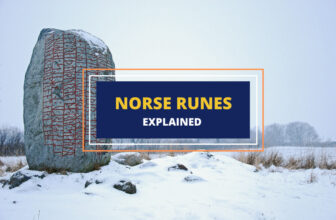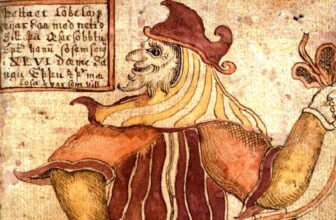
Table of Contents
Ginnungagap is an elusive name, one that even fans of Norse mythology may not have heard of. Yet, it is one of the core concepts in all of Norse mythology as it is quite literally the vast void of space from which life emerged and that surrounds all of existence. But is that all there is to it – just empty space?
What is Ginnungagap?
Ginnungagap, effectively translating as the “yawning void” or the “gaping abyss” is how the Nordic people understood the vastness of space. All things considered and given their limited understanding of cosmology, they were inadvertently close to correct in their interpretation of the universe.
The Norse believed that the world and its Nine Realms came to be from the nothingness of Ginnungagap and the physical interaction of a couple of base elements floating in it. However, they didn’t realize those elements were hydrogen, helium, and lithium – instead, they thought they were ice and fire.
In the Norse worldview, the first and only two things existing in Ginnungagap eons ago were the fire realm Muspelheim and the ice realm Niflheim. Both were completely lifeless and had nothing other than burning flames and icy water.
Once some floating ice shards from Niflheim came into contact with the flames and sparks of Muspelheim, the first living being was created – the giant jötunn Ymir. Other living beings quickly followed, until the first gods Odin, Vili, and Ve eventually slew Ymir and created the other seven of the Nine Realms from his body.

It’s interesting to note that for the Norse, life emerged from the nothingness first and then created the world and not the other way around as is the case with many other religions.
Additionally, due to their lack of knowledge of cosmology, the Nordic people didn’t quite understand how planets and space worked. That much is evident from the fact that the 15th-century Viking explorers of Greenland thought they had found Ginnungagap when they saw Vinland on the icy shores of North America.
The way they described it in the Gripla or the Little Compendium:
Now is to be told what lies opposite Greenland, out from the bay, which was before named: Furdustrandir hight a land; there are so strong frosts that it is not habitable, so far as one knows; south from thence is Helluland, which is called Skrellingsland; from thence it is not far to Vinland the Good, which some think goes out from Africa; between Vinland and Greenland is Ginnungagap, which flows from the sea called Mare oceanum, and surrounds the whole earth.
Symbolism of Ginnungagap
At first glance, Ginnungagap in Norse mythology seems quite similar to the “cosmic voids” in other mythologies as well. It’s a big empty space of nothingness and lifelessness that only includes the two basic elements of ice (Niflheim) and fire (Muspelheim). From those two elements and their straightforward physical interactions, without any intelligent thought or intent, life and the worlds as we know them started to form until, eventually, we came into the picture as well.
From that point of view, Ginnungagap can be said to represent with relative accuracy the actual empty cosmos around us and the Big Bang, i.e., the spontaneous interaction of the few particles of matter within the emptiness which eventually led to life and the world we live in.
Is it to say that the ancient Norse people understood actual cosmology? Of course not. However, the Creation myth of the Nordic people and the interaction between Ginnungagap, Niflheim, and Muspelheim do indicate how they saw the world – born from emptiness and chaos and destined to one day be consumed by them too.
Importance of Ginnungagap in Modern Culture
You won’t often see Ginnungagap referenced by name in modern culture. After all, it is just the Norse version of empty space. Still, there are modern stories inspired by Nordic legends that have created worlds rich enough to even mention Ginnungagap by name.
The first and most obvious example would be Marvel comics (but not the MCU yet). There, Ginnungagap is often referenced and is explained fairly accurately – as just the empty cosmos surrounding everything in existence.
The next mention should go to Ragnarok, a Norwegian fantasy drama produced by Netflix in which Ginnungagap is actually a camping site used for a school camping trip.
There’s also the Absolution Gap space opera novel by Alastair Reynolds where Ginnungagap is seen as a giant chasm. Ginnungagap is also the title of a sci-fi short story by Michael Swanwick. Then there is the black hole named Ginnungagap in the EVE Online video game and the death metal band Amon Amarth also has a song titled Ginnungagap in their 2001 album The Crusher.
In Conclusion
Ginnungagap or the “big nothingness” of the space around us is rarely mentioned in Norse myths but is seen as a universal constant that’s always around us. It is, in essence, a fairly accurate interpretation of the vastness of the actual cosmos – a big empty space from which the many planets and worlds emerged and from them – life.
The only difference in Nordic myths is that the Norse thought life came first from the emptiness of space, and then the worlds were created, not the other way around.








